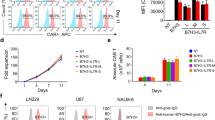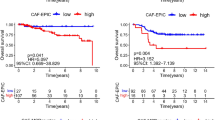Abstract
TNF-related apoptosis-inducing ligand (TRAIL) is a member of the TNF family of cytokines, which can induce apoptosis in various tumor cells by engaging the receptors, DR4 and DR5. Bortezomib (Velcade) is a proteasome inhibitor that has been approved for patients with multiple myeloma. There is some experimental evidence in preclinical models that bortezomib can enhance the susceptibility of tumors to TRAIL-induced apoptosis. In this study, we investigated the effects of TRAIL-induced death using an agonistic antibody to the TRAIL receptor DR5 (α-DR5) in combination with bortezomib administered to mice previously injected with breast cancer cells (TUBO). This combination had some beneficial therapeutic effect, which was significantly enhanced by the co-administration of a Toll-like receptor 9 agonist (CpG). In contrast, single agent treatments had little effect on tumor growth. In addition, we evaluated the effect of combination with α-DR5, bortezomib, and CpG in the prevention/treatment of spontaneous mammary tumors in Balb-neuT mice. In this model, which is more difficult to treat, we observed dramatic antitumor effects of α-DR5, bortezomib and CpG combination therapy. Since such a mouse model more accurately reflects the immunological tolerance that exists in human cancer, our results strongly suggest that these combination strategies could be directly applied to the therapy for cancer patients.






Similar content being viewed by others
References
Assudani D, Cho HI, DeVito N, Bradley N, Celis E (2008) In vivo expansion, persistence, and function of peptide vaccine-induced CD8 T cells occur independently of CD4 T cells. Cancer Res 68:9892–9899
Blade J, Cibeira MT, Rosinol L (2005) Bortezomib: a valuable new antineoplastic strategy in multiple myeloma. Acta Oncol 44:440–448
Brooks AD, Ramirez T, Toh U, Onksen J, Elliott PJ, Murphy WJ, Sayers TJ (2005) The proteasome inhibitor bortezomib (Velcade) sensitizes some human tumor cells to Apo2L/TRAIL-mediated apoptosis. Ann N Y Acad Sci 1059:160–167
Carpentier AF, Auf G, Delattre JY (2003) CpG-oligonucleotides for cancer immunotherapy: review of the literature and potential applications in malignant glioma. Front Biosci 8:e115–e127
Cho HI, Niu G, Bradley N, Celis E (2008) Optimized DNA vaccines to specifically induce therapeutic CD8 T cell responses against autochthonous breast tumors. Cancer Immunol Immunother 57:1695–1703
Corazza N, Kassahn D, Jakob S, Badmann A, Brunner T (2009) TRAIL-induced apoptosis: between tumor therapy and immunopathology. Ann N Y Acad Sci 1171:50–58
Cotter TG (2009) Apoptosis and cancer: the genesis of a research field. Nat Rev Cancer 9:501–507
Cotter TG, Lennon SV, Glynn JG, Martin SJ (1990) Cell death via apoptosis and its relationship to growth, development and differentiation of both tumour and normal cells. Anticancer Res 10:1153–1159
Cretney E, Takeda K, Smyth MJ (2007) Cancer: novel therapeutic strategies that exploit the TNF-related apoptosis-inducing ligand (TRAIL)/TRAIL receptor pathway. Int J Biochem Cell Biol 39:280–286
Dicato M, Boccadoro M, Cavenagh J, Harousseau JL, Ludwig H, San Miguel J, Sonneveld P (2006) Management of multiple myeloma with bortezomib: experts review the data and debate the issues. Oncology 70:474–482
Green DR, Bissonnette RP, Cotter TG (1994) Apoptosis and cancer. In: DeVita VT, Hellman S, Rosenberg SA (eds) Important advances in oncology. Lippincott, Philadelphia, pp 37–52
Hallett WH, Ames E, Motarjemi M, Barao I, Shanker A, Tamang DL, Sayers TJ, Hudig D, Murphy WJ (2008) Sensitization of tumor cells to NK cell-mediated killing by proteasome inhibition. J Immunol 180:163–170
Hao C, Song JH, Hsi B, Lewis J, Song DK, Petruk KC, Tyrrell DL, Kneteman NM (2004) TRAIL inhibits tumor growth but is nontoxic to human hepatocytes in chimeric mice. Cancer Res 64:8502–8506
Jung L, Holle L, Dalton WS (2004) Discovery, development, and clinical applications of bortezomib. Oncology (Williston Park) 18:4–13
Kim JH, Majumder N, Lin H, Chen J, Falo LD Jr, You Z (2005) Enhanced immunity by NeuEDhsp70 DNA vaccine is needed to combat an aggressive spontaneous metastatic breast cancer. Mol Ther 11:941–949
Krieg AM (2002) CpG motifs in bacterial DNA and their immune effects. Annu Rev Immunol 20:709–760
McKenna SL, Cotter TG (1997) Functional aspects of apoptosis in hematopoiesis and consequences of failure. Adv Cancer Res 71:121–164
Meng Y, Carpentier AF, Chen L, Boisserie G, Simon JM, Mazeron JJ, Delattre JY (2005) Successful combination of local CpG-ODN and radiotherapy in malignant glioma. Int J Cancer 116:992–997
Monneret C, Buisson JP, Magdelenat H (2005) A new therapy with bortezomib, an oncologic medicinal product of the year 2004. Ann Pharm Fr 63:343–349
Nava-Parada P, Forni G, Knutson KL, Pease LR, Celis E (2007) Peptide vaccine given with a Toll-like receptor agonist is effective for the treatment and prevention of spontaneous breast tumors. Cancer Res 67:1326–1334
Nencioni A, Wille L, Dal Bello G, Boy D, Cirmena G, Wesselborg S, Belka C, Brossart P, Patrone F, Ballestrero A (2005) Cooperative cytotoxicity of proteasome inhibitors and tumor necrosis factor-related apoptosis-inducing ligand in chemoresistant Bcl-2-overexpressing cells. Clin Cancer Res 11:4259–4265
Newsom-Davis T, Prieske S, Walczak H (2009) Is TRAIL the holy grail of cancer therapy? Apoptosis 14:607–623
Richardson PG (2004) A review of the proteasome inhibitor bortezomib in multiple myeloma. Expert Opin Pharmacother 5:1321–1331
Shanker A, Brooks AD, Tristan CA, Wine JW, Elliott PJ, Yagita H, Takeda K, Smyth MJ, Murphy WJ, Sayers TJ (2008) Treating metastatic solid tumors with bortezomib and a tumor necrosis factor-related apoptosis-inducing ligand receptor agonist antibody. J Natl Cancer Inst 100:649–662
Shanker A, Sayers T (2007) Sensitizing tumor cells to immune-mediated cytotoxicity. Adv Exp Med Biol 601:163–171
Takeda K, Kojima Y, Ikejima K, Harada K, Yamashina S, Okumura K, Aoyama T, Frese S, Ikeda H, Haynes NM, Cretney E, Yagita H, Sueyoshi N, Sato N, Nakanuma Y, Smyth MJ (2008) Death receptor 5-mediated apoptosis contributes to cholestatic liver disease. Proc Natl Acad Sci USA 105:10895–10900
Takeda K, Yamaguchi N, Akiba H, Kojima Y, Hayakawa Y, Tanner JE, Sayers TJ, Seki N, Okumura K, Yagita H, Smyth MJ (2004) Induction of tumor-specific T cell immunity by anti-DR5 antibody therapy. J Exp Med 199:437–448
Uno T, Takeda K, Kojima Y, Yoshizawa H, Akiba H, Mittler RS, Gejyo F, Okumura K, Yagita H, Smyth MJ (2006) Eradication of established tumors in mice by a combination antibody-based therapy. Nat Med 12:693–698
VanOosten RL, Griffith TS (2007) Activation of tumor-specific CD8+ T Cells after intratumoral Ad5-TRAIL/CpG oligodeoxynucleotide combination therapy. Cancer Res 67:11980–11990
Wagner H (2002) Interactions between bacterial CpG-DNA and TLR9 bridge innate and adaptive immunity. Curr Opin Microbiol 5:62–69
Xiang H, Fox JA, Totpal K, Aikawa M, Dupree K, Sinicropi D, Lowe J, Escandon E (2002) Enhanced tumor killing by Apo2L/TRAIL and CPT-11 co-treatment is associated with p21 cleavage and differential regulation of Apo2L/TRAIL ligand and its receptors. Oncogene 21:3611–3619
Yamamoto S, Yamamoto T, Nojima Y, Umemori K, Phalen S, McMurray DN, Kuramoto E, Iho S, Takauji R, Sato Y, Yamada T, Ohara N, Matsumoto S, Goto Y, Matsuo K, Tokunaga T (2002) Discovery of immunostimulatory CpG-DNA and its application to tuberculosis vaccine development. Jpn J Infect Dis 55:37–44
Zou W, Chen S, Liu X, Yue P, Sporn MB, Khuri FR, Sun SY (2007) c-FLIP downregulation contributes to apoptosis induction by the novel synthetic triterpenoid methyl-2-cyano-3, 12-dioxooleana-1, 9-dien-28-oate (CDDO-Me) in human lung cancer cells. Cancer Biol Ther 6:1614–1620
Acknowledgments
This project has been funded in whole or in part with federal funds from the National Cancer Institute, National Institutes of Health, R01CA80782 and R01CA103921 (E. Celis), under contracts NO1-CO-12400 and HSN261200800001E (T. Sayers). The content of this publication does not necessarily reflect the views or policies of the Department of Health and Human Services, nor does mention of trade names, commercial products or organizations imply endorsement by the US Government. This Research was supported (in part) by the Intramural Research Program of the Center for Cancer Research, National Cancer Institute, National Institutes of Health.
Author information
Authors and Affiliations
Corresponding author
Electronic supplementary material
Tumor growths for individual tumor in untreated or therapy treated virgin female Balb/neuT mice at different time points are illustrated in Fig. S1. Mammary pads were inspected twice every week to monitor tumor appearance. Measurable/palpable masses >2 mm in diameter were regarded as tumors. In all cases, when mice had tumors >20 mm in the greatest dimension or when skin ulceration occurred, they were euthanized by CO2 inhalation according to our Institutional Animal Care and Use Committee guidelines.
262_2010_834_MOESM1_ESM.ppt
Figure S1. Individual tumor regression in Balb-neuT mice by combination therapy with bortezomib, α-DR5, and CpG. Control mice (N1 and N2) were left untreated. Mice (A, B, C, and D) were given bortezomib (25 μg per injection, i.v. route), -DR5 (50 μg per injection, i.v. route), and GpG (50 μg per mouse, i.t. route) as shown in Fig 5. All animals were monitored for tumor appearance by manual examination of the mammary glands every 5 days. Measurable masses > 2mm diameter were regarded as tumors (PPT 190 kb)
Rights and permissions
About this article
Cite this article
Lee, S., Yagita, H., Sayers, T.J. et al. Optimized combination therapy using bortezomib, TRAIL and TLR agonists in established breast tumors. Cancer Immunol Immunother 59, 1073–1081 (2010). https://doi.org/10.1007/s00262-010-0834-0
Received:
Accepted:
Published:
Issue Date:
DOI: https://doi.org/10.1007/s00262-010-0834-0




